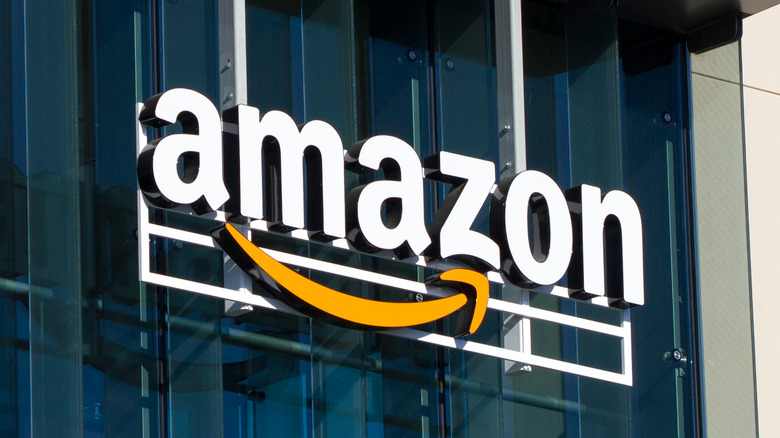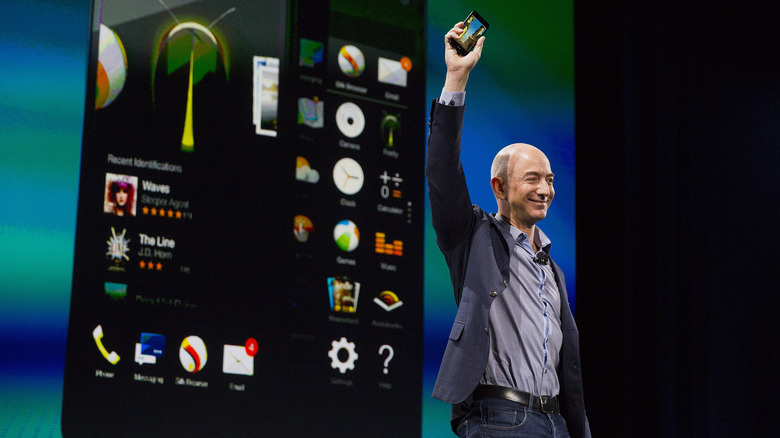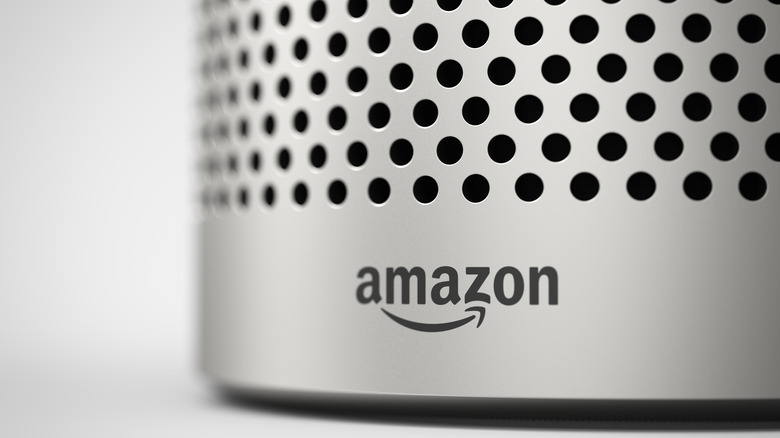The One Failure That Changed Amazon Forever
From worldwide domination of the online retail space to the invention of the smart speaker and the digital voice assistant Alexa, Amazon's history is made up of one red-hot success after another except for one particularly embarrassing chapter: the Amazon Fire Phone. Flaming out almost immediately upon its release, the Fire Phone nearly took Amazon's reputation down with it. When development began on the Fire Phone in 2010, Bezos had managed Amazon's successful expansions into general retail, web hosting and a house-brand manufacturing arm called Amazon Basics. The erupting smartphone market, spearheaded by Apple's iPhone, seemed like the next logical step for Amazon.
Around that time, another product category had begun trending as well; James Cameron's three-hour-long, CGI-fueled epic "Avatar" briefly reignited the public's interest in 3D technology and sparked a boom in the sales of 3D-enabled TVs. This inspired development of the Amazon Fire Phone's key differentiating feature — the world's first 3D smartphone screen — and sealed the device's doomed fate.
Fire Phone failed to live up to Amazon's pricing ethos
The Fire Phone didn't create a 3D image the same way movie theaters and 3D TVs do — you didn't need a special pair of glasses to give rise to the effect. Rather, the phone's selfie camera came equipped with head-tracking technology that turned and rotated the onscreen image in response to your head movements, creating an onscreen effect akin to looking down a street, according to a 2014 preview by TechCrunch. While early reviews praised the device's novel technology, consumer interest failed to ignite. However, even if it had, the Fire Phone had another fatal flaw — its price.
Historically, one of the keys to Amazon's success has been to stay highly competitive on price by sacrificing some (but not a lot) in terms of quality. At a time when top-of-the-line smartphones like the iPhone and Samsung Galaxy cost $200 with a two-year contract, Amazon's decision to also charge $200 pitted the Fire Phone against a field of top-shelf competitors Amazon had no business challenging. The Fire Phone's price tag tells another part of the story, too: just months after it debuted, Amazon tried to liquidate its remaining inventory by dropping the Fire Phone price to $0.99 per handset. But by then, it was too late.
From the ashes of the Fire Phone rose a phoenix named Alexa
Amazon announced its Fire Phone in June 2014 and launched it in July, but by October of that same year the retail giant had decided to torch the remaining $170 million worth of unsold inventory it still had warehoused. Amazon announced it had written off its surplus of Fire Phones following third-quarter financials that revealed almost half a billion dollars in losses, while warning investors that fourth-quarter losses would be likewise abysmal. However, in the midst of what could've been the beginning of the end for Amazon, and just one month after the company publicly abandoned its smartphone ambitions, a voice appeared in the wilderness to announce Amazon's reversal of fortunes. Alexa was the name Amazon chose to give to the voice that would personify its latest invention: the Amazon Echo, a so-called "smart speaker" that could listen for and respond to voice commands in the home.
Seen at first as an amusing but not particularly useful gadget, over the next several years, the Amazon Echo and its various permutations would establish — and quickly dominate — a whole new product category. Suddenly, the tables had turned, as the companies Amazon had followed into the smartphone space, Apple and Google, scrambled to release voice-assistant-enabled smart speakers of their own. With the Fire Phone project snuffed out, there were now more resources available to fan Alexa's rising flame, which would grow big and bright enough to change Amazon forever.


